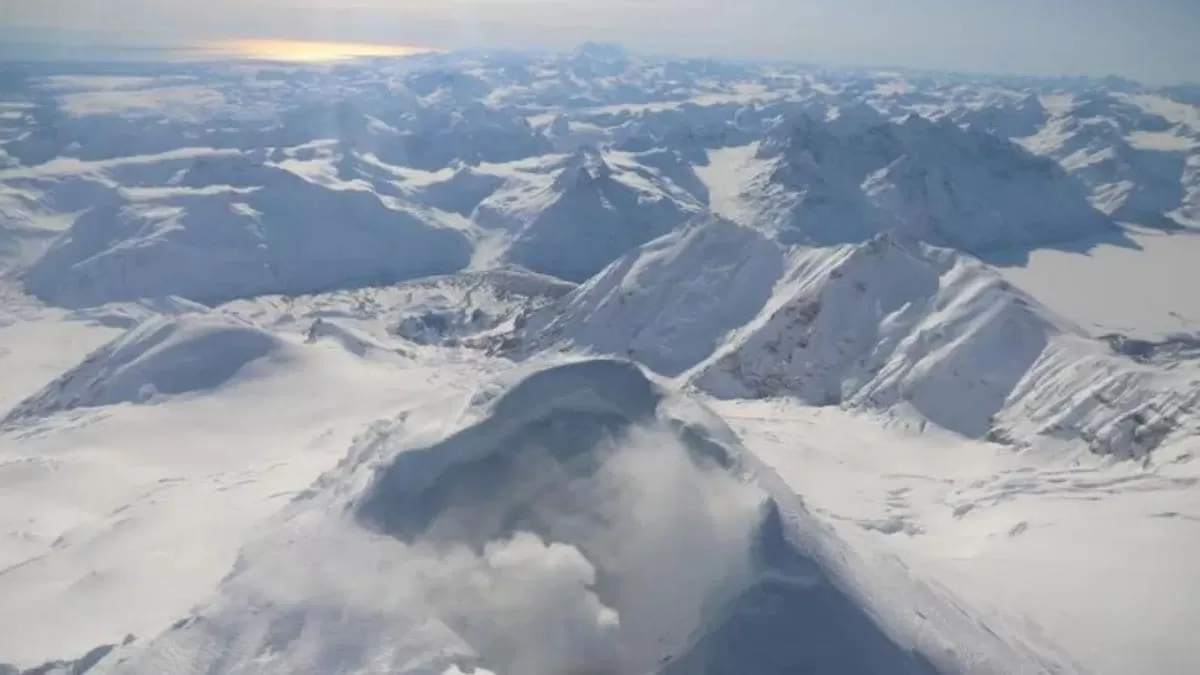Mount Spurr, a majestic stratovolcano located west of Anchorage, Alaska, has been showing signs of increased activity in recent weeks, sparking concerns among scientists at the Alaska Volcano Observatory. Rising seismic activity, gas emissions, and melting snow have all been observed, suggesting that magma is moving beneath the surface. With this evidence, experts believe that an eruption may be imminent.
The last time Mount Spurr erupted was in 1992, when it sent a massive ash plume over Anchorage, causing disruption to air travel and coating the city in a thick layer of ash. Prior to that, in 1953, a similar eruption occurred at Crater Peak, a smaller volcanic cone located within the larger Mount Spurr complex. These historical eruptions serve as a reminder of the potential danger posed by this active volcano.
The Alaska Volcano Observatory, a joint program between the United States Geological Survey, the University of Alaska Fairbanks, and the Alaska Division of Geological and Geophysical Surveys, has been closely monitoring Mount Spurr and its surrounding areas. With the recent increase in activity, scientists are working diligently to gather data and assess the situation.
According to John Power, the scientist-in-charge at the Alaska Volcano Observatory, the current activity at Mount Spurr is not unusual. He explains that the volcano has a history of intermittent eruptions, with periods of quiet followed by short bursts of activity. However, the current activity is being closely watched as it could indicate a larger eruption on the horizon.
One of the key indicators of a potential eruption is the increase in seismic activity. This refers to the movement of the Earth’s surface caused by the movement of magma beneath the surface. The Alaska Volcano Observatory has recorded a significant increase in seismic activity in the vicinity of Mount Spurr, indicating that the volcano’s magma chamber is becoming pressurized.
In addition, scientists have also observed an increase in gas emissions from the volcano. This is a result of the magma heating up rocks and releasing gases trapped within them. These gases, including sulfur dioxide and carbon dioxide, can be harmful to humans and animals if inhaled in large quantities. The Alaska Volcano Observatory has been monitoring these emissions closely and has advised nearby residents to take precautions.
Another concerning sign is the melting of snow and ice on the volcano’s slopes. This is a result of the heat from the magma chamber, which can reach temperatures of up to 2,000 degrees Fahrenheit. The melting snow and ice can lead to lahars, or volcanic mudflows, which can be dangerous and destructive.
Despite these warning signs, scientists at the Alaska Volcano Observatory are quick to point out that there is no need for immediate concern. They emphasize that they are constantly monitoring the situation and will provide updates and warnings if necessary. In the meantime, they urge the public to stay informed and be prepared for any potential developments.
In the event of an eruption, the Alaska Volcano Observatory has a comprehensive emergency response plan in place. This includes working closely with local authorities to ensure the safety of nearby communities. They also have a network of monitoring stations and equipment in place to gather data and track the volcano’s activity.
While the possibility of an eruption may seem daunting, it is important to remember that Mount Spurr is a natural wonder and an integral part of the Alaskan landscape. Its eruptions, while potentially dangerous, also serve as a reminder of the powerful forces at work within our planet. The Alaska Volcano Observatory and its team of dedicated scientists are working tirelessly to understand and monitor Mount Spurr, ensuring the safety of those living in its vicinity.
In conclusion, the recent increase in activity at Mount Spurr has caught the attention of scientists and residents alike. While an eruption may be becoming more likely, the Alaska Volcano Observatory is closely monitoring the situation and will provide updates and warnings as needed. It is important for the public to stay informed and prepared, but also to appreciate the beauty and power of this remarkable volcano.

